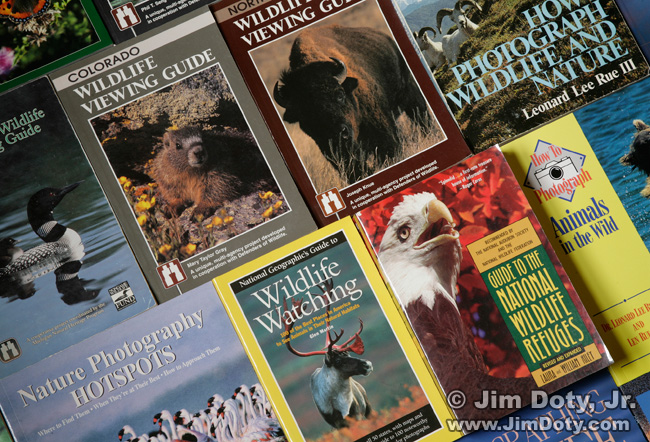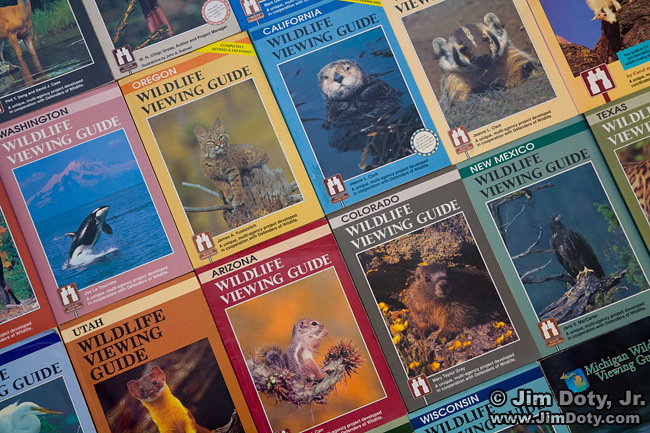Looking for wildlife this year? If you want to photograph wildlife you need to find wildlife. A good wildlife location guide can send you to the right places and save you hours or days of frustration looking in all the wrong places.
In the case of common wildlife, you don’t need a guide book. If you are looking for squirrels you may not need to look any farther than your own back yard or the local city park. But if you want to photograph something a little more exotic, like Chachalacas or Green Jays, you need to know where to look for them (the southern tip of Texas).
Wildlife location guides are essential if you want to increase your odds of seeing the wildlife you are looking for. They tell you the best places to go, and if the time of year matters, they tell you that too.
Nationwide
Three of my favorite wildlife location guides are the Guide to the National Wildlife Refuges by Laura and William Riley, National Geographic’s Guide to Wildlife Watching by Glen Martin, and Nature Photography Hotspots by Tim Fitzharris. All three guides cover the whole United States. Rileys’ book is very detailed and covers a huge number of locations, but not the national parks. The books by Martin and Fitzharris are more selective and cover a shorter list of prime locations, including some of the best national parks to photograph wildlife.
State by State
For more detailed state by state information, a great set of books is the Watchable Wildlife series (look for the binoculars on the cover). Most of the books in the series were published by Falcon Press. Some of the books are getting hard to find, so grab the books you want while you can still get them. The Watchable Wildlife series was a nationwide project and involved a wide variety of U.S. and state government agencies. A lot of work went into the series and it shows in the quality of the information in the books. Each book provides information and maps for the best wildlife viewing sites in the state. That doesn’t mean the wildlife will line up by the side of the road and pose for your camera (as some reviewers of the books naively assume). You still need to know a bit of basic biology for the animals you want to see, and luck sometimes has a lot to do with it.
For example, Horseshoe Park in Rocky Mountain National Park is one of the better locations for spotting Bighorn Sheep in northern Colorado. Summer is the prime viewing time (don’t plan on seeing any Bighorns in the winter), but whether or not they show up on any given summer day is highly unpredictable. They can show up every day for a week, and then not be around at all for several days. I met a professional wildlife photographer who was at Horseshoe Park every day for 4 days and he didn’t see a single Bighorn. Then on his fifth and last day before he had to fly home, dozens of Bighorn sheep came down to feed in the meadow. Some stood up in the rocks right above the park road, presenting excellent photographic possibilities. Had he gone home a day earlier, he would have missed the whole thing.
Given the unpredictability of wildlife, it pays to increase your odds by using wildlife guide books to direct you to the best locations at the best time of year. You could wander Colorado’s mountains for weeks and never see any elk, or go to Rocky Mountain National Park in the fall and be almost guaranteed to see dozens if not hundreds of elk.
You can find information and purchase links for all of my favorite wildlife location guides in the Wildlife Location Guides section of my photography store which is powered by Amazon.com.
Article Links
How to Be A Better Wildlife and Nature Photographer
How To Photograph Wildlife, The Best Books
Purchase Links
My Photography Store with direct links to Amazon.com. You get the same great Amazon prices, service, and guarantee, and you help support my web sites. Thanks.



